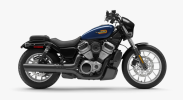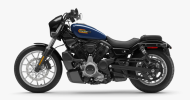Mtns2Skies
Final Approach
- Joined
- Jul 12, 2008
- Messages
- 5,631
- Display Name
Display name:
Mtns2Skies
No, not me (okay maybe me)

The EMSCO Arctic Tern was an American Amphibious float plane designed by Charles F. Rocheville for the Shell Oil company. The aircraft was intended for use for observation/survey duties. The aircraft first flew in 1933, powered by a 300hp Pratt & Whitney Wasp Junior engine. The Arctic Tern used a wing from a Lockheed Sirius and the tail from a Lockheed Vega.
The three seat Arctic Tern featured a single seat open cockpit mounted in the small fuselage. The other two crew members sat in enclosed cabins built onto the floats. The tail was supported on twin booms.
A problem was soon identified during initial flight tests, where under certain roll angles, fuel would stop flowing to the engine. (This was a problem that was inherited from the Lockheed Sirius). When this happened the engine would stall. The Arctic Tern was destroyed during an emergency landing after this had occurred and the pilot was unable to restart the engine. The aircraft contained only the pilot, Charles Rocheville, who survived with serious injuries.

The EMSCO Arctic Tern was an American Amphibious float plane designed by Charles F. Rocheville for the Shell Oil company. The aircraft was intended for use for observation/survey duties. The aircraft first flew in 1933, powered by a 300hp Pratt & Whitney Wasp Junior engine. The Arctic Tern used a wing from a Lockheed Sirius and the tail from a Lockheed Vega.
The three seat Arctic Tern featured a single seat open cockpit mounted in the small fuselage. The other two crew members sat in enclosed cabins built onto the floats. The tail was supported on twin booms.
A problem was soon identified during initial flight tests, where under certain roll angles, fuel would stop flowing to the engine. (This was a problem that was inherited from the Lockheed Sirius). When this happened the engine would stall. The Arctic Tern was destroyed during an emergency landing after this had occurred and the pilot was unable to restart the engine. The aircraft contained only the pilot, Charles Rocheville, who survived with serious injuries.






